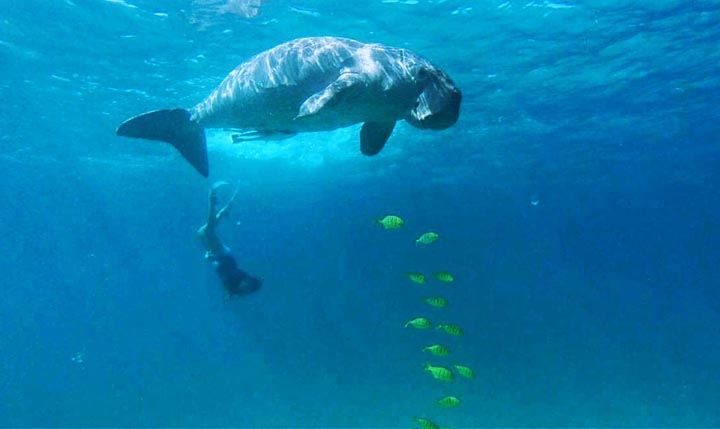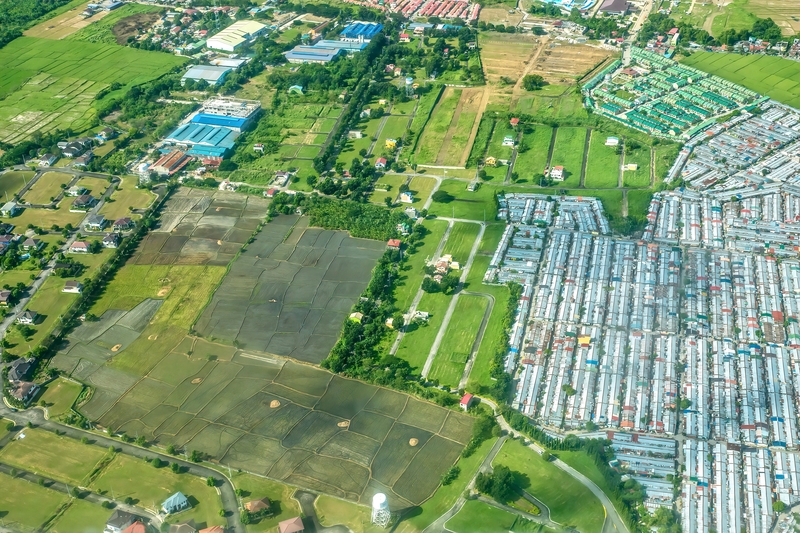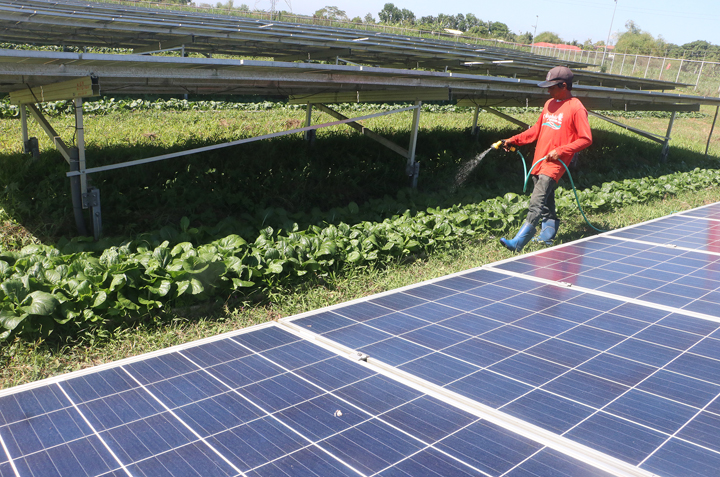A few weekends back, this reporter finally met the elusive but beautiful dugong, or sea cow, a vulnerable species that’s almost endangered in Calauit, Busuanga, Palawan.
Overwhelmed by its size compared to mine, while this reporter was trying to freedive at the back of the dugong, “Aban,” as what the tribes call this sea cow, was very playful and has been acquainted with the presence of humans.
Going to Calauit Island was very challenging. We immersed ourselves among the Tagbanua tribesmen for four days and three nights. We thanked them for accommodating us and for taking care of this wonderful creature.
We had to walk past eight mountains and a climbed one. Our group had to stay overnight in the middle of the forest before heading to Calauit Island. There, we learned a lot of the struggles being hurdled by the Tagbanua tribe in protecting their land—our land and natural resources.
In fact, the Tagbanuas were among the only few who are willing to guard the protected areas without pay. Nonetheless, they remain one of the most humble Filipinos who perfectly exemplifies what Filipino hospitality is.
Legend
A legend being told by tribal elders in Palawan tells of a sea creature with a tail like a mermaid that is gracefully swimming through the waters around the Calamianes Group of Islands.
It is said through that the sea creature was actually the blind wife of a cheating fisherman, who used his poor wife as an anchor of his boat while fishing and left her there under the waters to attend to his mistress. Their three kids, however, longed for their mother.
Their three children, waiting for their mother by the seashore, sing of songs longing: “Mother please feed your milk to Neneng, please show yourself to us. Dodong is also sad without you. Whatever your face is now, we are not afraid of you, Dodong-Dodong, Dodong-Dodong.”
One day, a big brown creature with small eyes appeared along the shore, laid down and offered its breasts to give milk to the brother who has been longing for his mother’s milk.
From then on, every morning, the children went by the seashore to wait for the creature which they called “Dodong-Dodong.” The name passed on to generations, which eventually became “Duyong,” to the current dugong, the sea cow, where in Malay term literally means, “the lady of the sea.”
Dugong of Palawan and their importance
“They have been here for as long as our elders know,” Jimmel Novero said to the BusinessMirror in Filipino. Novero is part of the Calamian Tagbanua tribe, head of Bantay Dugong and part of the Committee on Ecotourism in Calauit, Palawan, where a dugong-conservation area exist.
The Calamianes Group of Islands is located north of Busuanga Island. It is a three-hour van ride from Coron City, where tourism has been booming since it was hailed as the world’s best island by Travel and Leisure magazine, Conde Nast Traveler and National Geographic Traveler for more than once.
It is owned solely by the Calamian Tagbanua tribe after they have won a Supreme Court case, and was awarded a Certificate of Ancestral Domain Title over more than 22,000 hectares of land and sea in 1998. This includes the island of Calauit where the dugongs are conserved.
There are over 50 dugongs already identified by the Tagbanuas with the help of partner nongovernment organizations, such as the Community Centered Conservation (C3) Philippines, government agencies, such as the Department of Environment and Natural Resources, and partner institutions, including universities and research groups.
The Tagbanua tribe protects the dugongs as they believe that gifts from nature must be taken cared of, Novero said.
“There will be nothing else left to see by our future generation if the dugongs will be gone,” he added.
For Novero, it is both a privilege and responsibility for them, the Tagbanua tribe, to protect and conserve what they have, including the forests. “We don’t want to abuse what we have, we want to protect it as it protects and provides for us.”
Threat to extinction
“The population of this species is shrinking due to many factors,” Novero said. One of the factors is the loss of habitat and feeding grounds. An attempt to seaweed farming was held because it can disrupt and destroy the feeding grounds of the dugong.
The dugong (Dugong dugon) is a mammal that eats seagrass. It is specifically categorized as the only marine herbivorous mammal and the only living representative of the once-diverse family Dugongidae. Its closest relative, the Stellar’s sea cow was hunted and became extinct in the 18th century.
The dugong is largely dependent on seagrass and feeds on it. It is largely present in Indo-West Pacific region, which includes Australia, Indonesia and the Philippines. They occur in wide, shallow, protected areas, such as bays and mangrove channels, yet they are restricted in coastal habitats as they are threatened.
For thousands of years, the dugong has been poached and hunted for meat and oil. According to the International Union for Conservation of Nature, the dugong is listed as vulnerable to extinction, while the Convention on International Trade in Endangered Species has resolved to limit or ban the trade of products derived from the dugong.
“They are like people,” Novero said. “They care for their young ones extensively, get stressed when there’s too much disturbance of their environment, which sometimes causes their death, and are compassionate animals.”
Along with the its slow rate of reproduction—with females giving birth only a few times during their life, and fertility and sexual maturity reaching only between 10 years to 17 years, and with a long lifespan of 70 years—the dugong is especially vulnerable to extinction.
Protection, conservation and sustainability through ecotourism
With the help of C3 Philippines, the Tagbanua tribe guarding the dugong-conservation area have been educated and trained on how to take care of this vulnerable creature.
“C3 Philippines have been instrumental in educating us on how to protect the dugong, and on how we can also benefit from it without harming it or destroying its habitat,” Novero said.
The dugong ecotourism attraction started in March but, way before this date, tourists have already been flocking to see this creature.
“We needed to limit our tourists to only 20 to 25 a day,” Novero explained. “We have a booking system where a tourist needs to book a day [earlier] in order to see the dugongs.”
The Tagbanua tribe has a strict schedule. Tourists are only allowed to see the sea cows from 9 a.m. to 3 p.m. and walk-ins are not allowed.
“This is to avoid them [dugongs] to get stressed, and so they can eat and rest normally without the interruption of humans.”
Novero explained that if the dugongs are gone, the tribesmen’s livelihood would be affected, too, as many of them rely on the existence of the dugong. Besides a source of income through ecotourism, it is also a venue for other areas to be protected.
“Marine-protected areas grew when the dugongs were finally conserved,” Novero added. Several areas around Calauit Island have been raised and established as protected areas, hence, they give the tribes more resources to fish for food and business. Not only that, C3 Philippines also initiated the establishment of many forest conservation areas after the dugong was declared as protected.
Ginelle Jane Gacasan, who works for C3 Philippines at the Salvacion site, told the BusinessMirror that the Bogtong forest reserve has been created because “we believe that, whatever happens to the sea, where the dugong lives, is also affected by the disruptive activities of the mountains and the forest.”
Which is why C3 Philippines, together with the Tagbanua tribesmen, have been supported by GIZ, a German development agency that provides support and services in the field of international development cooperation. The Tagbanuas volunteered as the protectors of the conserved areas, especially the forest reserve.
Over 2,600 hectares of open woodlands and grasslands forest have been protected by an ordinance in Barangay Bogtong and Chewey. Endemic birds and wildlife are now protected and the tribes are pushing forward to declare their area as a national protected site.
Image credits: Marrise Tumampos

































